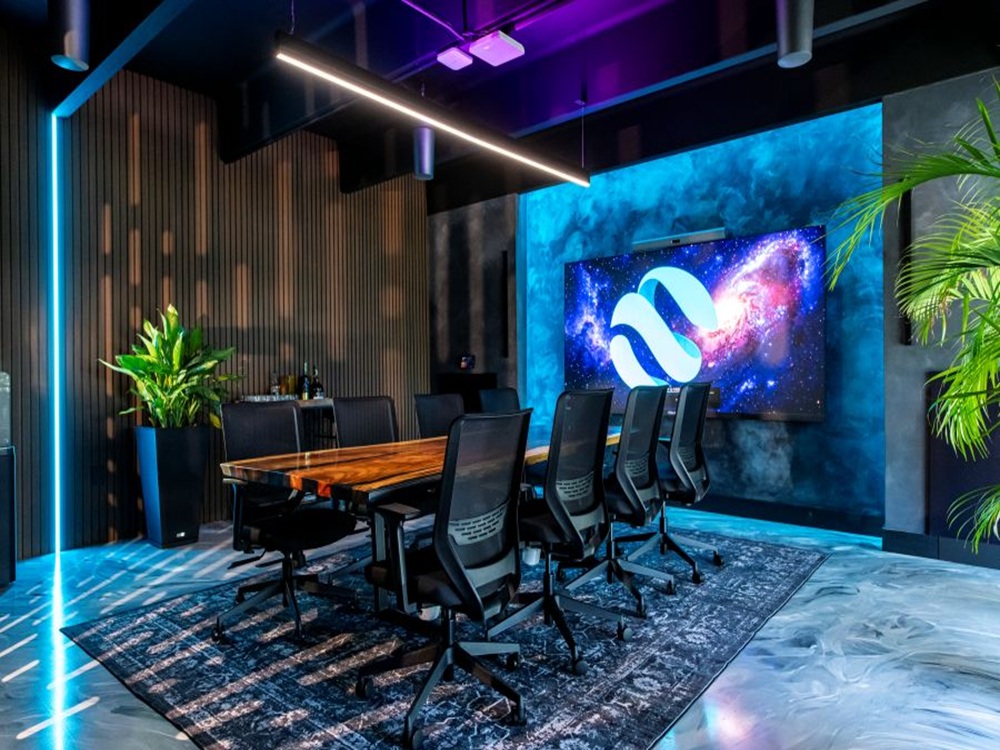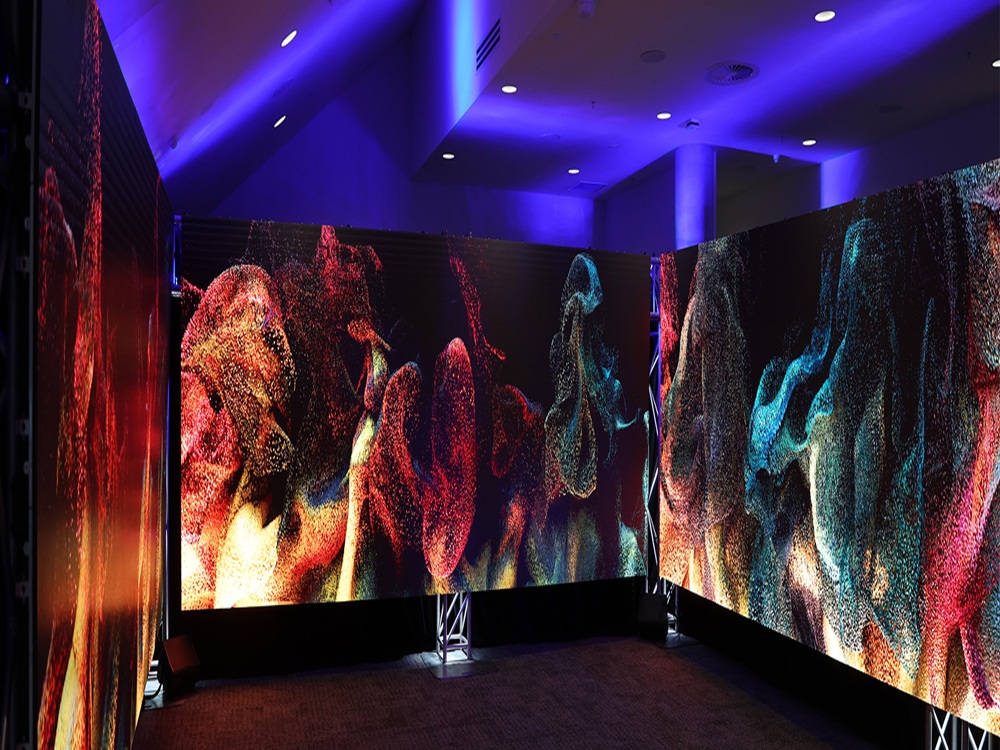Indoor LED displays feature high-resolution colors, vivid images, and versatile usage, making them valuable across multiple industries. This article explores the types, applications, and selection tips for choosing the best indoor LED display.
What Is an Indoor LED Display?
An indoor LED display is a digital screen that uses light-emitting diodes (LEDs) to deliver high-quality visual performance. Designed specifically for indoor environments where lighting conditions can be controlled, these displays offer excellent brightness, color saturation, and image clarity—even under ambient lighting.
Indoor LED displays blend seamlessly into indoor spaces and deliver an immersive visual experience. They are widely used in shopping malls for advertisements, in offices, airports for flight information, and entertainment venues for dynamic content. In the events industry, they are often used as stage backdrops or for live broadcasting. With their superior image quality, they can easily meet diverse client demands.
Types of Indoor LED Displays
Indoor LED displays come in several forms, each with its own features and applications. Let’s take a closer look:
1. Fixed Installation LED Displays
Fixed installation LED displays are designed for permanent setups. Once installed, they remain fixed in place, ensuring long-term stable performance. They are commonly found in retail stores, offices, airports, and public venues. These digital signage solutions are ideal for displaying advertisements, announcements, or important information.
Built for durability, fixed LED displays operate continuously without compromising quality. They are available in various sizes and resolutions, allowing you to choose the best screen for your viewing distance and space. Fixed installation LED displays are ideal for long-term, 24/7 operations.
2. Rental LED Displays
Rental LED displays are portable and easy to set up, making them perfect for temporary use. They are widely used in trade shows, concerts, exhibitions, and conferences. Lightweight and modular, these displays can be assembled and dismantled quickly—saving time and labor costs.
Despite their temporary nature, rental LED displays deliver high-quality visuals and enhance the audience’s viewing experience, making them a practical and cost-effective solution for short-term events.
3. Transparent LED Displays
Transparent LED displays have a semi-transparent design that allows light to pass through. They are often used in retail environments—especially store windows—where they can showcase promotional content without blocking the view inside.
These displays also appear in creative installations and museums, where they bring innovation and sophistication to the space. Their unique visual appeal makes them a popular choice for businesses seeking to stand out.
4. Flexible LED Displays
Flexible LED displays are designed for non-standard or creative installations. They can bend and curve to form various shapes, making them ideal for artistic and architectural applications.
With flexible LED panels, the design possibilities are endless—from wrapping around columns to creating wave-shaped displays. Their versatility makes them an excellent choice for immersive and imaginative visual experiences.
5. Small Pixel Pitch LED Displays
Small pixel pitch LED displays are known for their ultra-high resolution, allowing viewers to see fine details clearly even at close range. These displays are ideal for conference rooms, control centers, luxury retail stores, and other environments requiring precision and clarity.
The small pixel spacing ensures that both images and text remain crisp, even when viewed up close—perfect for projects that demand high-definition visuals.
Applications of Indoor LED Displays
Each type of indoor LED display suits different scenarios. Understanding these applications helps you choose the right one for your needs.
-
Fixed Installation LED Displays:
Commonly used in retail stores, airports, hotels, and offices for advertising, navigation, or corporate messaging. For example, in shopping malls, they can showcase ongoing promotions or highlight new product launches. -
Rental LED Displays:
Ideal for temporary events like trade shows, concerts, and product launches. Whether for a business seminar or a live concert, these displays add vibrancy and excitement through dynamic visuals and real-time content. -
Transparent LED Displays:
Best suited for retail windows, creative displays, and museums. They draw customer attention without obstructing the view, and in museums, they create interactive and engaging exhibits. -
Flexible LED Displays:
Perfect for artistic installations, exhibitions, and architectural spaces. These displays integrate smoothly with unique surfaces like curved walls, offering audiences an immersive experience. -
Small Pixel Pitch LED Displays:
Commonly used in boardrooms, control centers, and luxury stores, where high-resolution visuals are essential for detailed presentations or premium branding.
How to Choose the Right Indoor LED Display
Selecting the right display depends on several key factors:
-
Resolution:
The clarity of the screen depends on its resolution. For close viewing, choose a high-resolution model like a small pixel pitch LED display. For longer viewing distances, a lower resolution may suffice. -
Size:
Consider the installation area. Larger spaces may require bigger screens to cover wide audiences, while compact areas can use smaller ones. For custom shapes or sizes, flexible LED screens are ideal. -
Budget:
Your budget determines your options. Advanced models like transparent and flexible LEDs cost more, while rental screens are suitable for short-term use. Fixed installations are more cost-effective for long-term needs. -
Intended Use:
Identify the main purpose—advertising, live events, or corporate presentations. Transparent displays suit retail, while rental screens are better for events.
Benefits of Indoor LED Displays
Indoor LED displays offer numerous advantages, making them the preferred choice for many applications:
-
High Resolution:
They deliver sharp, clear visuals, enhancing audience engagement—from advertisements to business presentations. -
Flexibility:
Available in various types such as flexible and transparent models, they adapt to unique spaces and creative designs. -
Energy Efficiency:
Compared to traditional display technologies, LEDs consume less power, reducing operational costs and environmental impact. -
Superior Visual Impact:
With vibrant colors and brightness, indoor LEDs maintain clarity even in well-lit environments, ensuring powerful visual performance. -
Durability:
Designed for long-term stability, they offer extended lifespans and excellent return on investment.
Conclusion
Indoor LED displays are a modern and innovative communication tool. Understanding their types, applications, and benefits helps you select the perfect display for your needs. They are one of the most effective ways to elevate visual impact and captivate audiences with stunning clarity and creativity.
Post time: Oct-28-2025


